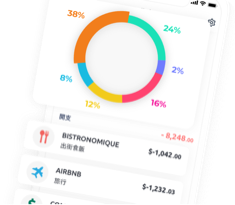Starting to invest in the Hong Kong market is hard because of lot size restrictions – essentially rather than buying one share, you’ll need to buy 100, 500 or more shares (depending on the stock) which raises the minimum amount required to invest!
(If you want to jump straight to the comparison, click here)
As an example, if you wanted to buy MTR Corporation (0066.HK) stocks:
- Their lot size is 500 shares, and each share costs $45.1
- 500 shares x $45.1 = $22,550 plus transaction fees
- In order to invest in just MTR, you would need to invest at least $22,550
making it inaccessible for most beginner investors and very expensive to build a diversified portfolio!
One of the financial products offered by banks and brokerages to solve this problem is the Monthly Stock Investment Plan
The Monthly Stock Investment Plan
When you enroll in a Monthly Stock Investment Plan, you commit to investing a fixed amount each month, and you choose which stocks you would like to purchase with this amount. The bank / broker will allow you to skip the lot size restriction when this happens.
The thing you need to be aware of the most is the fees involved – if you’re investing a small amount each month and paying a fixed fee, the costs can add up dramatically
e.g. investing $1,000 a month with a $50 min. fee means you’re paying 5% in fees each month!
Fee Comparison between Selected Banks and Securities Firms




(Actual charges depend on in-time information provided by banks and securities firm.)
Advantages of Monthly Stock Investment Plans
- Dollar Cost Averaging (DCA): Each month when you contribute a fixed amount, the amount of shares you are able to afford will change. E.g. if the stock price increases, you will buy less of it. If the stock price decreases, you will buy more of it. This leads to lower volatility (aka your portfolio will move up and down less)!
- Forced to save each month: Your contributions to the monthly investment plan will be deducted from your account automatically each month so you’ll be forced to save!
- Less stress:Once you pick your stocks, you contribute automatically and there’s no ‘picking’ of stocks required after that. As long as you built a diversified portfolio, you should be good to go!
- Lower entrance fee:You can start investing with as little as $500 per month – although you may want to be careful of the fees!
- Credit card points:Some banks actually accept the monthly contribution via credit card (although at a slightly worse rate). See some recommendations here.
How to Start a Monthly Stock Investment Plan
- Open an account at a bank or a securities firm
- Choose one or more stocks
- Set your monthly fixed contribution sum
Simple Example of a Monthly Stock Investment Plan
Bob pays $10,000 per month to buy Stock A.

With the benefits of Dollar Cost Averaging (DCA), Bob bought more shares when share price was lower and fewer shares when share price was higher, thus successfully reducing the volatility in his portfolio (and ensuring he doesn’t panic when stock prices go down)!
Things to Note
Before you settle for the regular stock savings plan, there are a few things you might want to take a look at:
- Do you have sufficient back-up savings? It is recommended to have 3 months’ worth of savings enough to sustain both your investment contributions and living expenses so that you would not need to put a stop to the savings plan unwillingly when unplanned events come up.
- Wisely choose your stocks: Blue-chip stocks and Exchange-Traded Funds (ETF) are relatively less risky. It is not recommended to choose a stock that might surge and sink in short time. In general, the stock options provided by banks are relatively safe ones.
- Be prepared that it is a long term hold: Avoid selling in a short time when you observe some market fluctuations. Choose a stock you are willing to invest in for a longer time because this investment strategy is at its best performance over a long term investment period.
- Re-invest your dividends: A lot of blue-chips and or index funds pay out dividends regularly. It is recommended to further invest using the dividends to maximize the return with the perks of compound interest.
- Be aware of odd lots: Since monthly stock investment plans allow you to buy ‘less’ than a lot, it also means it’s harder to sell these so they may sell for less than the market price.
An Alternative
Monthly Stock Investment Plans have some very clear disadvantages: the fees can be quite high, your choice of stocks are limited and there’s no guidance whatsoever.


















